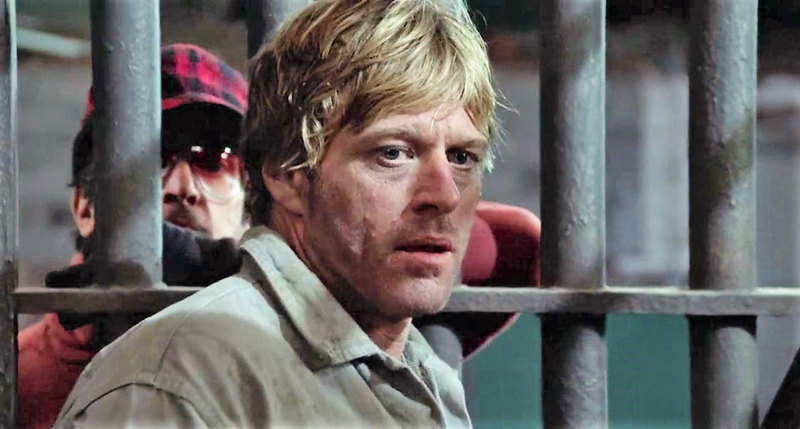On April 24, Sony will release DVDs of two anime TV series starring Marvel heroes: X-Men” and “Iron Man,” the latter a 2010 12-episode continuing storyline about Tony Stark’s expansion into Japan and the resistance he meets there . . . both from the Japanese and from a terrorist organization known as Zodiac.
It’s one of those series that falls somewhere between a 6 and 7 out of 10—better than average, with very cool artwork but a storyline that’s about as generic as it gets for superheroes.
The episodes:
Japan: Enter Iron Man
Going Nuclear
Reap the Whirlwind
A Twist of Memory, a Turn of Fate
Outbreak
Technical Difficulties
At the Mercy of My Friends
Daughter of the Zodiac
A Duel of Iron
Casualties of War
The Beginning of the End
Endgame
As the bilingual packaging suggests, the series has two audio options: English and Japanese, with Japanese and English subtitles the default.
At first I had trouble distinguishing Stark’s voice (Keiji Fujiwara) from other characters, but soon, because he’s paired off against mostly females, that problem dissolves. Stark is a multi-millionaire who, like so many CEOs of multinational corporations, has a slightly deaf ear when it comes to the culture of a country he’s expanding into. In this case, an Arc Station that uses technology which promises to bring Japan free power ad infinitum. Of course, that free power comes with a price, as the technology uses plutonium, and Stark seems clueless that the Japanese would resent him because a) he’s an American who thinks he can do and say whatever he wants, b) he’s a rich American who thinks he can own anything and anyone, c) he made his mega-millions through weapons sales and Japan is a peace-loving country, especially since WWII, and d) the mere mention of the word “plutonium” is enough to send chills down the spines of people who suffered through nuclear fallout.
The cross-cultural tension actually adds a nice depth to this series, which otherwise falls into familiar patterns. Stark is in Japan to mass produce a new Iron Man prototype he’s calling Dio, thinking that these new suits will enable Japan to defend itself from anything and that he’ll be welcomed with open arms. The lead scientist is Dr. Tanaka, a serious woman with whom Stark spends a lot of time. Then there’s the reporter Nanami Ota, a woman who keeps trying to get an exclusive interview with Stark and ends up getting caught up in his escapades.
The villainy comes courtesy of Zodiac, an organization that throws such things at Iron man as Scorpio, a bio-electrical-mechanic giant scorpion, or Cancer, an enormous crab counterpart, or a bull robotic that’s operated by a Zodiac “convert.” But there’s more. At the heart of it all is technology from a shelved operation called The Tesla Project, in which Japanese scientists sought to manipulate and control the weather. Soon scientists affiliated with the old program start turning up dead—sucked into a series of deadly tornadoes that have uncharacteristically started ravaging Japan. And Stark is called upon to defend himself when an illegal plutonium smuggling operation is discovered.
I’m sure that plenty of viewers will think that the battles are the high point, but for me it was the cross-cultural tensions. Yes, some of them are resolved way too quickly—as when Stark tries to help a rescue team that displays the same resentment he experienced elsewhere, but which changes after he does something heroic. But at least it’s an element of human interaction in a series that could have become as robotic as the mechanical nemeses.
Total run-time is 287 minutes.
Video:
“Iron Man” is presented in 1.85:1 anamorphic widescreen, and it looks great in standard definition, with bright colors, distinct edges, and the kind of detail you start to expect with even DVDs these days.
Audio:
The audio options are an English or Japanese Dolby Digital 5.1, with Japanese the default. Subtitles are in English and English SDH, with English subtitles the default. For a 5.1 audio it’s not as dynamic a soundtrack as fans might have hoped for, but for a TV series it’s a pretty bold and full sound. The bass may not rumble, but it resonates, and the rear effects speakers come alive when they need to.
Extras:
Two bonus features are provided on the first disc, and two on the second. “The Marvel Anime Universe: Re-Imagining Iron Man” (10 min.) brings on people associated with Marvel Television and the Japanese animation studio responsible for the series. They’re all passionate and articulate, and when one of them says anime brings “a depth of storytelling and emotion that we don’t get to experience in western animation” we’re reminded that these episodes are pitched at adults, not children. There’s nothing R or even PG-13 rated here—no “Archer” stuff, in other words—but that certainly explains the cultural contexts and an emphasis on the politics of human interaction. “Voicing Tony Stark: Interview with Keiji Fujiwara” (5 min.) shows the voice talent in an Animax promo interview talking about his role and his take on the character.
On disc two, the bonus features didn’t come up on my stand-alone player but did when I checked it on my computer. Included here is “21st Century Hero: The Technology of Iron Man” (7 min.) in which the Marvel TV and anime production team talk about the evolution of Iron Man’s uniform, with a blend of talking heads and animated clips. It’s probably the best of the bonus features. Then there’s a “Special Cross Talk: Iron Man and Wolverine” (29 min.) feature that gets two animators from the Iron Man team (Yuzo Sato and Tosohiki Inoue) and two from the Wolverine team (Hiroshi Aoyama and Kengo Kaji) talking about the characters in context and the challenges each presents.
Bottom line:
The story is overly familiar, but cross-cultural tensions and a weather-manipulating doomsday machine, combined with some fine drawing and animation, make “Iron Man” an above-average superhero entry.


